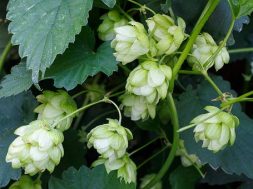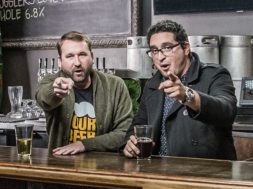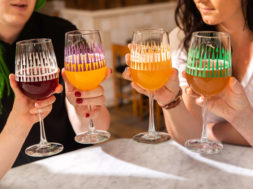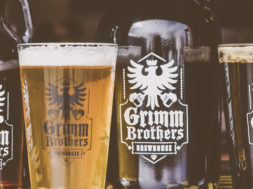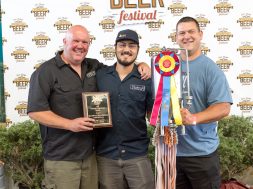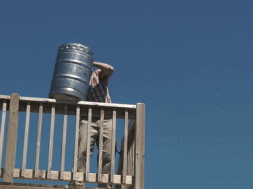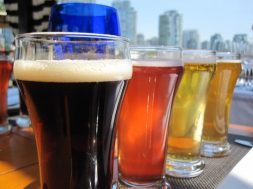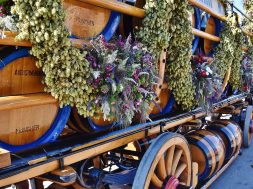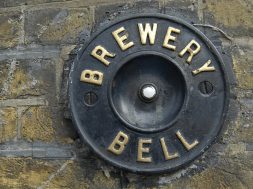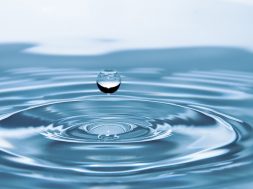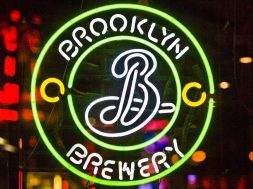Is Craft Beer Too Hoppy to Drink?
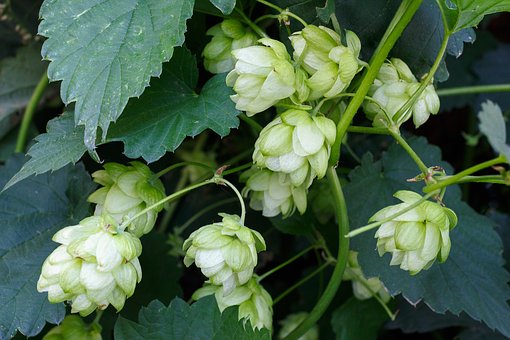
via The Daily Beast by Lew Bryson
No matter how many stouts, porters, or lagers are on store shelves, for better or worse, the success of the craft beer industry is directly tied to the success of IPA (India pale ale). The wildly popular style has exploded over the last few years and is defined by the use of hops, more hops, and even more hops.
As brewers have ridden IPA to new heights, beer across the board has gotten increasingly hoppy and bitter.
But is this trend getting out of hand? Have we lost any semblance of balance? Or are our tastes evolving?
You might say this crisis of hop confidence was inevitable; there have been warning signs since the beginning of the brewing renaissance in America. Almost every new, small brewery that opened offered at least one beer that had what was then a startling amount of hops. A degree of hops that went far beyond the small amount traditionally needed to balance the intrinsic sweetness of the malt. Anchor Brewing started upping the hops quotient in 1975 with its Liberty Ale, a beer that still gives an electric zing of bitterness and aroma 40-odd years later.
But as every fan of horror movies knows, you have to keep upping the carnage to keep your audience satisfied and delighted.
And drinkers get jaded pretty quickly. They’re continually looking for the next hop bomb, and what was a screamer in 2000 is boring today; more likely, it’s no longer being made.
If you’re an IPA fan, these are great times to be a beer drinker. New strains of hops come out so often and quickly that they sometimes don’t even have a name yet, just a number. Old classic hop varieties like Fuggles, Galena, Saaz, and Hallertauer now compete with new hops with names like Apollo, Denali, Lemondrop, and Experimental #09326 (described as having aromas of grapefruit, tropical fruit, citrus). Hop strains have become like grape varietals in wine; the aficionados know them, and have their preferences.
And like wine, depending upon the soil and climate, hops will develop a range of aromas and flavors.
The main growing regions can be found across Europe, Australia, New Zealand, and America’s Pacific Northwest. Small amounts are also being grown in other areas, too. Sometimes these upstart farmers are working with neighboring brewers who make hop” beers, with hops right off the bine. (That’s not a typo; the long stems of the hop plant may look like vines, but the technical term is “bine.”)
The traditional ways of adding hoppy bitterness and aromas to beer haven’t changed.
Hops are added early in the boiling phase of brewing to impart bitterness and flavor (“kettle hops”), then added again just before the boil is over to get the more delicate aromas from the hops (“finishing hops”). Brewers may then use a “hop back,” a filter filled with whole hops that the hot beer passes through on the way to the fermenter, picking up more aroma. More hops may be added in the maturation tank, a process called “dry hopping,” and sometimes even more hops go into the individual kegs in a small cloth bag, a “hop pocket.”
If that seems like hops enough, well, you’re behind the curve. Hops may be added to the cooking grains before the boil. They may be continuously added throughout the boil, or there may be only one massive addition just before the end of the boil, colorfully called “hop bursting.” Sierra Nevada Brewing pioneered a hybrid of hop back and dry hopping using their “hop torpedo;” this steel cylinder is packed with hops and maturing beer is pumped from the tank through the hops and back into the tank.
Sometimes hoppiness is serendipitous.
Small brewers have been tossing out their filters in favor of centrifuges, which spin solids out of finished beer (hop bits and precipitated proteins). Unexpectedly, brewers found that centrifuging was recovering a large amount of aromatic hops oils that had been previously dumped with the solids. Bonus hoppiness!
Other brewers have gone in the opposite direction. The hottest hoppiest beers right now are so-called New England style ones, a completely unfiltered IPA so cloudy that some look like orange juice. “Juicy” is the most common word used to describe their bright, fresh hoppiness, but it comes at a price. These beers are only at peak freshness for a few weeks, and the flavor falls off rapidly after that. Many are sold directly from the brewery to fans who line up to buy cases at a time.
All of this technology and technique is in service of the raging demand for hoppy beers.
Call them Session IPA, IPA, Double IPA, Triple IPA, Imperial stout, “Cascadian Dark Ale” (which is, yes, a dark India pale ale), and Robust Porter, IPL (the tongue in cheekily named India Pale Lager). Call them whatever new name you make up, but stuff ’em with hops, and watch them sell. Brewers have a joke that “IPA” actually stands for “Increases Profits Automatically.” Bartenders say it stands for “I’ll Pour Another.”
If they continue to sell, can the possibility that we’ve gone too far even be contemplated? Certainly. We asked that about Hummers, we asked that about selling mortgage debt, and we asked that about internet stocks. All bubbles continue to swell, right up until they pop.
So, consider what Brooklyn Brewery master brewer Garrett Oliver said in a New Yorker article on “The rise of extreme beer” back in November 2008.
“When a brewer says, ‘This has more hops in it than anything you’ve had in your life – are you man enough to drink it?,’ it’s sort of like a chef saying, “This stew has more salt in it than anything you’ve ever had – are you man enough to eat it?'”
While I agree with Oliver in principle, our palates have also undergone a significant change. Where 30 years ago most American homes had one type of salt, today we buy different types of salt to finish the stew at the table. It’s about flavor, not saltiness.
Similarly, new-fangled techniques like hop bursting and torpedoes don’t add bitterness to the beer, instead they add aroma, flavor, and the more delicate parts of the hops. Adding hops for hop sake is hopefully a thing of the past and bittering has actually already been dialed back. I had an old-style heavily bittered IPA not long ago, and while it was an interesting throwback to what we used to drink, it was clumsy, and blunt. I didn’t finish it.
There is nothing wrong with adding more hops to beer when brewers develop new ways to use them. We get beers that are flowery, packed with fruit aromas, or zippy with pine and pith. Hops aren’t going away; they’re becoming even more wonderful.
